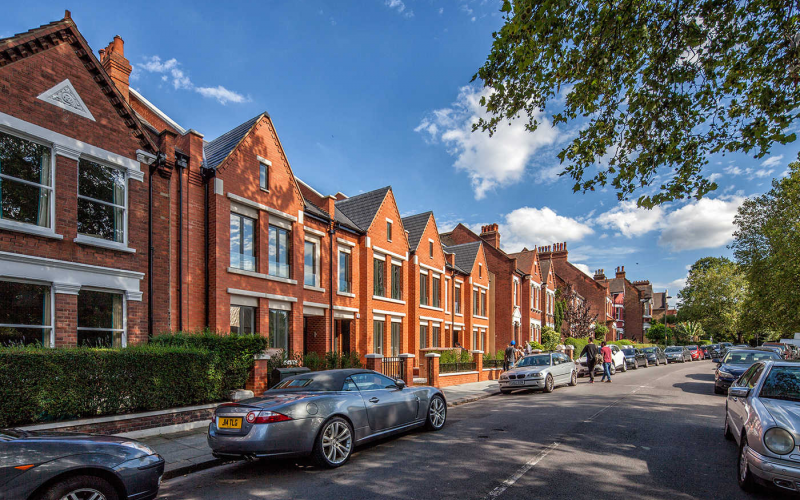
Calais Street
14-17 Calais Street Lambeth London SE5 9LP
Description
The objective of the landscape strategy is to establish a unified, communal landscape administered by a maintenance company on behalf of the new residents - an approach similar to that of the SPAN housing developments built by Eric Lyons in suburban locations around London in the 60s and 70s. In these developments, homes are positioned within a shared landscape managed by the residents association. This shared landscape management regime is intended to develop a sustainable, active and engaged community. Houses are positioned on the site so that they are at an angle to adjacent boundaries and edges, giving the impression that they sit within rather than on the edge of the communal landscape. Visual openness is maintained by woven wire boundary fences between gardens on which climbing plants grow. New tree plantings reinforce the existing woodland landscape character of the adjacent railway embankments. Access to homes is provided by a self-compacting gravel surface shared by vehicles and pedestrians. The material treatment of this surface, as well as a number of discreet cranks in its geometry, encourages slow vehicular speeds and enables the access way to be used by residents as an amenity space. Wildflower planting on the edge of the access way blurs the boundary between hard and soft landscape. Within the communal landscaped area, two amenity spaces are provided. At the heart of the development the access way expands to form a turning point for refuse vehicles that can also as a place for children to play safely. Fruit trees are planted at its periphery, which will give it an orchard-like character when mature. To the east a smaller, more secluded play space is proposed. The 'grandchildren's room' is a communal structure where visiting or resident children can play indoors. It is conceived as a communal living room to which all residents will have access and is intended to facilitate communal gatherings. In addition to this shared landscape, all dwellings also have private garden spaces located either along the northern boundary with the mature woodland of the railway embankment, or along the southern boundary with North Lane.
Planning History
The site was formerly a brownfield site, occupied by a vehicle test centre as part of the adjacent military base. English Churches was granted outline planning permission for a development comprising 25 Veterans Assisted Homes, 7 houses and 12 flats. Following the initial outline approval, English Churches developed the application for the veterans housing, and sold the remainder of the site to Baylight Property Services. Sergison Bates architects were subsequently appointed by Baylight Property Services to provide an alternative residential proposal to make the best use of the challenging site situated at the junction of North Lane and the Aldershot rail line. In February 2008 Sergison Bates architects submitted a planning application for the erection of 12 houses and apartment building comprising 9 apartments on the site. Whilst there was no objection in principle to the proposed development, determination of the application was held in abeyance following the emergence of issues relating to habitat protection for protected bird species in the Thames Basin Heaths Special Protection Area. Permission was eventually granted for this application in October 2011. In the intervening period since the application was submitted in 2008, the design team and client had the opportunity to reflect upon their proposals for the site and recognised that a different scheme with a lower density and a closer relationship to the existing woodland landscape would be more appropriate. A new proposal was developed for 14 semi-detached houses within a landscape setting. Paired into seven 'villas' the houses give the impression of villas within the landscape. An application for this proposal was submitted in March 2013. Permission was granted in June 2013.
